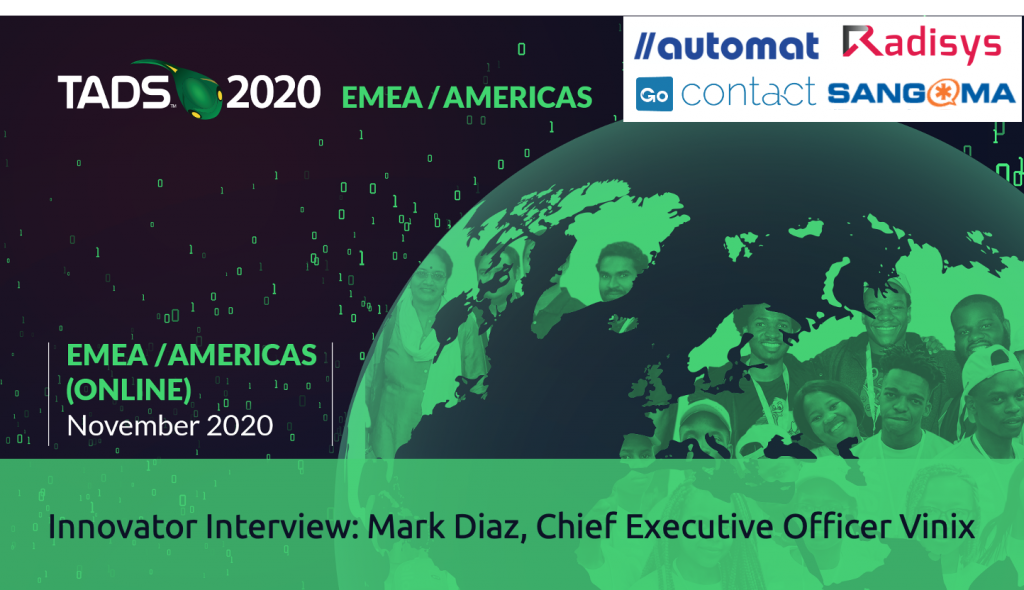Innovator Interview: Mark Diaz, Chief Executive Officer Vinix
This was a fun interview with a kindred spirit. Vinix demonstrates why diversity will reign in enterprise communications. Thanks to open source projects like, Kamailio, Kazoo (2600Hz) and Matrix; Mark delivers programmable communication services. That it, stuff that does what his customers need; and support they know and trust. I’ve made a number of these points before on why small and medium businesses can and do flourish given the BABS aaS win-takes-all hype.
We cover lots of topics in the interview, the core message is deliver what the customer needs with trusted support, it’s a lesson for the whole UCaaS, CPaaS, CCaaS industry. Below the interview video is a short video of Vinix Blast. I hope this interview inspires people around world to copy Mark’s lead in customer-focused programmable communications.
Agenda Description
Mark’s pitch for what he does is: shaping the future of unified communications and enterprise internet connectivity.
Mark is an uber-geek from an early age, working on packet switching networks like SprintNET, Tymnet and Telnet. In 2001, he began working with open source VoIP projects such as Asterisk, and grew with the industry in projects such as 2600hz, Freeswitch, Kamailio and many more.
In 2008, he opened a VoIP services company, Vinix Technologies, Inc. which conducted a full range of VoIP services for public companies, such as AT&T, Cbeyond, Comcast, Windstream and more, in addition to thousands of end users nationwide .
In 2009, Mark began working with 2600Hz. They started a new project, codenamed “Whistle”, which would become the Kazoo communications platform, and the foundation for Vinix’s nationwide communications network.
The primary focus today is Vinix “Blast”, which is a fork of Riot/Element running on the Matrix protocol! They are planning marketing around educating the public to the benefits of supporting an open comms standard like Matrix.
The differentiator is that they are building it for everyday business use. As a service, it’s click and play and has the added bridges required by everyday business large and small, such as business SMS/MMS, voice and video via SIP, faxing, user portal, etc.
Positioned as a direct and truly unified communications package aimed against Slack and Teams, early beta customer reviews have been positive.
If you have questions for Mark please let us know. Here are some we plan to ask:
- As a small company operating in the over-marketed US enterprise communications market how do you survive?
- What is your vision for Vinix? What are the greatest risks to Vinix?
- Multi-part question here: What’s your view on the current positioning of bundling UCaaS, CCaaS, CPaaS and longggggg lists of features? Is the premium one-stop-shop the end game? How do you view the US enterprise communications / telecoms market evolving? Will RingCentral and Twilio be like the Borg, ‘You will be assimilated. Resistance is futile.’ Or will diversity reign?
- Is the removal of Net Neutrality proving a threat, or rather a ‘Sword of Damocles’ over investment (I read your NN blog article a while back)?
- How is Kazoo doing? How do you position it compared to the other open source telecom software projects? What is the future for Kazoo?
- Your focus on Matrix/Element is interesting, we’re seeing large national deployments with European government institutions. I’ll be watching Vinix Blast closely as you bring those European successes to the US. Would you explain Blast, the problems you are solving, and what you think is different about deployments in the US versus Europe.


Thanks Mark for such a fun interview. One of the topics we covered in the interview was the challenges in running a business and open source project. As you’ve followed 2600Hz/Kazoo from the beginning, what are some of the things you’ve learned, from the outside looking in, on how to make money while running an open source project. I ask, as I’m often asked this question 🙂
Thank you Alan! It was certainly my pleasure (boy … I talk a lot!). When I was a young man, my mentor taught me my first lesson in real estate, which I still hold sacred til this day in all aspects of business: “cost … is not a function of value” … and this is what keeps us focused. As much as I love engineering and technology, it only has value if it actually improves lives in some way. In B2B, decision makers are happy to pay for products/services if it adds value to their productivity and efficiency. By keeping this at the forefront of our business and product decisions, we ensure our growth.